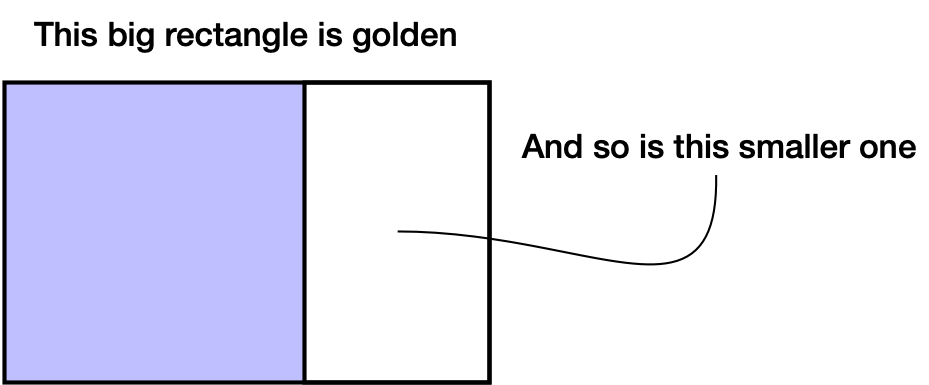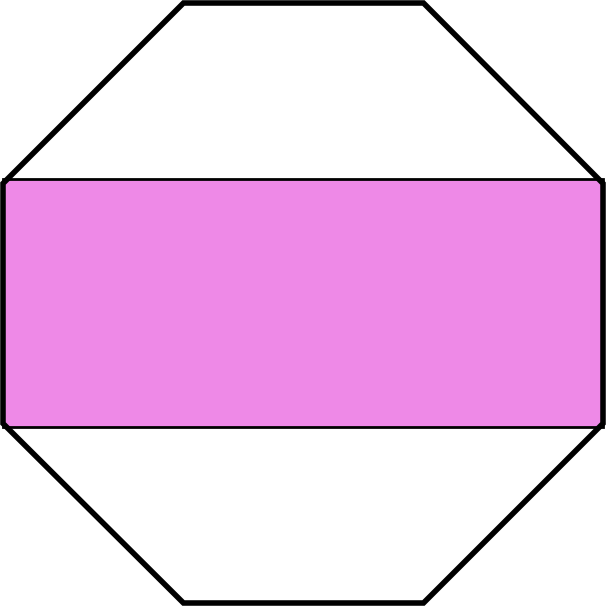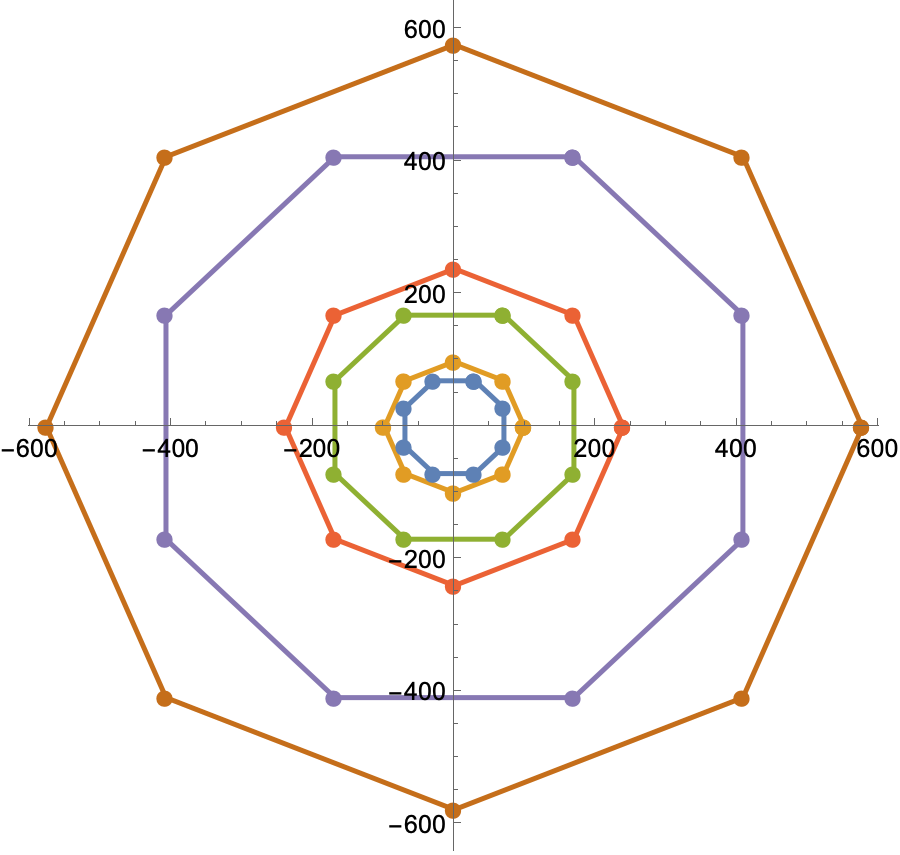Octagons and the silver ratio
August 12, 2024 at 9:30 PM by Dr. Drang
For reasons I don’t recall, I was looking at this post recently and realized that I’d missed something. Let’s rectify that.
The post was about octagonal houses and how much more area they enclose than a square house for a given length of wall. The result was this ratio:
What I missed when writing the post was that the quantity in the parentheses is the silver ratio, . The silver ratio is one of a number of “metallic” ratios, of which the golden ratio, , is the one you’re likely to know. While the golden ratio is the positive solution to the equation
the silver ratio is the positive solution to
(In the spirit of the just-closed Olympics, I’ll mention that the bronze ratio is, as you might expect, the positive solution to
As far as I know, the bronze ratio doesn’t have a commonly used symbol.)
You may recall that if you remove a square from a rectangle whose side lengths are in the golden ratio, the remaining rectangle is also golden.

Similarly, if you remove two squares from a silver rectangle, the remainder is also silver. The number of squares removed matches the constant terms in the equations above.

The silver ratio is related to octagons in a more fundamental way than the area ratio mentioned at the top of the post. The “middle” rectangle in a regular octagon1 is silver.

This goes back to the silver ratio being the cotangent of a 22.5° angle.
There’s another interesting connection between the silver ratio and octagons. Just as the golden ratio is the limit of the ratio of consecutive Fibonacci numbers, ,
0, 1, 1, 2, 3, 5, 8, 13, 21, 34, 55, 89,…
the silver ratio is the limit of the ratio of consecutive Pell numbers, ,
0, 1, 2, 5, 12, 29, 70, 169, 408, 985,…
What does this have to do with octagons? You can make a pretty accurate drawing of a regular octagon using only integer coordinates if you use the Pell numbers to place the vertices. For example, if you draw an octagon with vertices at
and
you’ll get an octagon that’s not quite regular but is awfully close, at least if is relatively large. Similarly, if you draw an octagon with vertices at
and
you’ll get a “tilted” octagon (one that isn’t oriented like a stop sign) that’s also very close to regular.
Here are some nearly regular octagons drawn using those rules:

They look pretty regular, even though we haven’t gone very far along in the Pell numbers.
I’m not sure how valuable this construction method is, but it’s pretty cool. I learned it from the Wikipedia article on Pell numbers, which says you can find it in this 1994 paper by Donald Knuth. I’ve seen other discussions of this rational octagon approximation that reference the same paper, but I don’t see the connection. The paper is concerned with the paths you get by jumping around on a rectangular grid, and there’s a section where he considers Pell numbers, so the pieces are there; but I don’t see where the paper does what the articles that reference it say it does. If you see the connection, let me know.
-
I’ve been talking about regular octagons all this time but have dropped the “regular” for brevity. I assume you’ve figured that out, but if not, now you know. ↩
